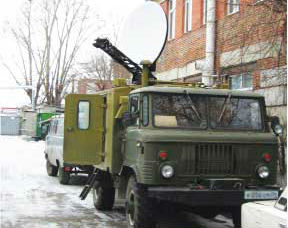KVH Industries, Inc. recently agreed to a service provider agreement with mobile satellite service distributor MVS Group.
MVS will be allowed to offer KVH’s mini-VSAT Broadband service and TracPhone V-series satellite communications systems to MVS' global customer base. By bundling KVH’s service within MVS' billing and airtime management system and full suite of value-added services, MVS will be able to provide one-stop shopping services for its global customer base.
Brent Bruun, senior vice president of global sales and business development for KVH, expressed glowing admiration for KVH's newest service provider. “The MVS Group is a market leader that has won a solid following of loyal customers throughout the world," he noted, "By providing outstanding customer support and offering satellite services enhanced with its comprehensive, value-added services.”
VP Bruun expressed delight on behalf of KVH “to enter into this cooperation to offer [MVH's] customers next-generation
VSAT services delivered by our mini-VSAT Broadband network and our award-winning TracPhone V-series product line.”
Founded in 1995, the MVS Group is dedicated to providing mobile applications access to L-band MSS services to its customers wherever they are. The company's excellent support, high-quality billing systems, and full range of value-added services made it a leader in the mobile satellite communications market. MVS Group is now the third largest Inmarsat Distribution Partner in the world. It is also a global Service Provider for Iridium. With corporate headquarters in the United States, and regional offices in Cyprus, Russia, and the Netherlands, MVS Group closely cooperate with their customers to realize business objectives through efficent use of satellite communications services.
On MVS Group's part, Deborah Deffaa, executive director of the MVS, explained that “Broadband connectivity offshore is becoming an important requirement in the commercial maritime industry.” According to her, MVS's customers are employing new applications to save fuel, reduce greenhouse gas emissions, enhance effiency, and boost crew morale. These applications need faster and cheaper satellite communications service for maximum efficency.
"KVH has developed a remarkable new maritime broadband network," Director Deffaa observed, "That takes advantage of advanced, spread spectrum technology to dramatically reduce the size and cost of the antennas needed to receive the service onboard the vessels." KVH's advanced systems make it "easier than ever before to deploy affordable broadband service at sea.”
KVH designs are considered to be the fastest-growing and most widely-used maritime VSAT solution in the world. More than 2,000 Mini-VSAT Broadband system terminals have been sold.
The KVH network employs ArcLight spread spectrum technology. Created by KVH’s technology partner, ViaSat, Inc. with a specific eye for mobile use, ArcLight possesses a unique and desirable combination of fast speed, low latency, efficient reuse of satellite channels, and ability to support very small antennas that provide reliable service even in inclement weather.
Maritime vessels equipped with mini-VSAT Broadband service have access to some of the highest data rates available today. Download speeds can go as fast as 4 Mbps while upload speeds can hit 1 Mbps. The KVH
satellite broadband service also provides Voice over IP (VoIP) telephone lines with optimized service and prioritization of applications.
KVH manufactures several onboard antennas for its mini-VSAT Broadband network. Its 24" diameter TracPhone V7 is an award-winning and highly popular option, while the 14.5" diameter TracPhone V3 is the world’s most affordable and compact maritime VSAT antenna. In addition, KVH will soon release the new dual-mode TracPhone V11, with the ability to accept both C and Ku-band satellite signals from KVH’s global network, giving the V11 95% coverage of the globe







